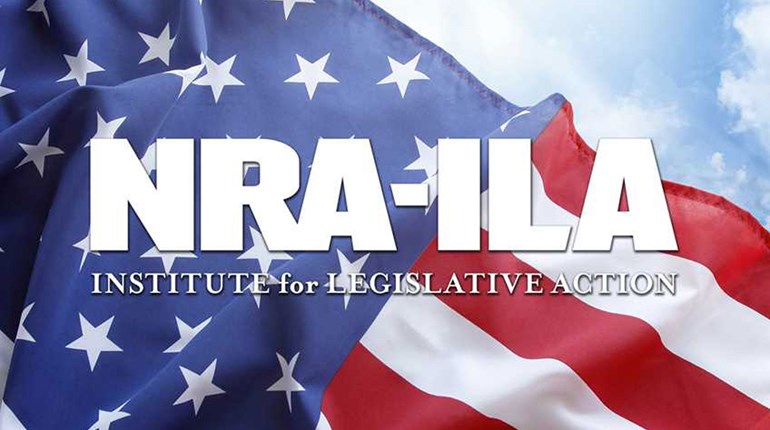
In early February, the Bureau of Alcohol, Tobacco, Firearms, and Explosives (ATF) published the final Factoring Criteria for Firearms with Attached “Stabilizing Braces” rule.
Since 2012, when Biden was serving as then-President Barack Obama’s vice president, ATF had recognized that stabilizing braces serve a legitimate function, and the addition of a stabilizing brace on a pistol or other firearm did not automatically subject that firearm to the provisions of the National Firearms Act (NFA). That’s because stabilizing braces were first designed and intended to help disabled veterans fire large-format pistols.
With the finalization of this rule, the Biden Administration is reversing more than a decade of agency guidance and rulings that the firearms industry and law-abiding American gun owners have relied on when designing or acquiring firearms.
That’s why we partnered with the Firearms Regulatory Accountability Coalition, SB Tactical, B&T USA, wounded warrior Rick Cicero and a coalition of 25 states to challenge the rule. As I write this, the case has just been filed in the United States District Court for the District of North Dakota. The case is Firearms Regulatory Accountability Coalition v. Garland.
NRA has repeatedly pushed back on administration attempts to classify firearms with attached braces under the NFA. When the most recent rule was proposed, we submitted detailed comments explaining why the proposed rule was unlawful. In response, ATF only made the rule more restrictive.
ATF begins the new rule by clarifying that any former guidance or rulings on stabilizing braces are void. The rule then amends the existing definition of “rifle” by adding the following.
(1) For purposes of this definition, the term “designed or redesigned, made or remade, and intended to be fired from the shoulder” shall include a weapon that is equipped with an accessory, component, or other rearward attachment (e.g., a “stabilizing brace”) that provides surface area that allows the weapon to be fired from the shoulder, provided other factors, as described in paragraph (2), indicate that the weapon is designed, made, and intended to be fired from the shoulder.
(2) When a weapon provides surface area that allows the weapon to be fired from the shoulder, the following factors shall also be considered in determining whether the weapon is designed, made, and intended to be fired from the shoulder:
(i) Whether the weapon has a weight or length consistent with the weight or length of similarly designed rifles;
(ii) Whether the weapon has a length of pull, measured from the center of the trigger to the center of the shoulder stock or other rearward accessory, component or attachment (including an adjustable or telescoping attachment with the ability to lock into various positions along a buffer tube, receiver extension, or other attachment method), that is consistent with similarly designed rifles;
(iii) Whether the weapon is equipped with sights or a scope with eye relief that require the weapon to be fired from the shoulder in order to be used as designed;
(iv) Whether the surface area that allows the weapon to be fired from the shoulder is created by a buffer tube, receiver extension, or any other accessory, component, or other rearward attachment that is necessary for the cycle of operations;
(v) The manufacturer’s direct and indirect marketing and promotional materials indicating the intended use of the weapon; and
(vi) Information demonstrating the likely use of the weapon in the general community.
While it is not the role of an administrative agency to add to a congressionally enacted statutory definition, doing so in such an arbitrary and nonsensical manner is a direct attack on law-abiding gun owners.
Creating a firearm classification that is contingent on a firearm having rear surface area, without even providing a measurement for how much area is sufficient to trigger the classification, is the exact type of arbitrary rulemaking the Administrative Procedures Act (and the Due Process Clause of the Constitution) prohibit.
The new “standard” seems clear: ATF will decide on a case-by-case basis whether a given firearm is subject to the NFA, and American gun owners will face felony consequences at the whims of bureaucratic decision makers.
Fortunately for law-abiding gun owners, federal courts have recently proven more willing to invalidate agency actions that go beyond congressionally enacted statutes. In a Texas case where NRA filed an amicus brief, one of ATF’s most recent major rules was struck down by the United States Court of Appeals for the Fifth Circuit. The agency’s stabilizing brace rule should meet the same fate for the same reasons.
Thanks to support from members like you, NRA is fighting back against this most recent attack on law-abiding gun owners by the Biden administration. And, we’ll continue to fight against any future attacks on our rights. In the meantime, please check back at nraila.org for more updates on this case and other critical Second Amendment litigation, and make sure you’re signed up for NRA-ILA’s email alerts.


































